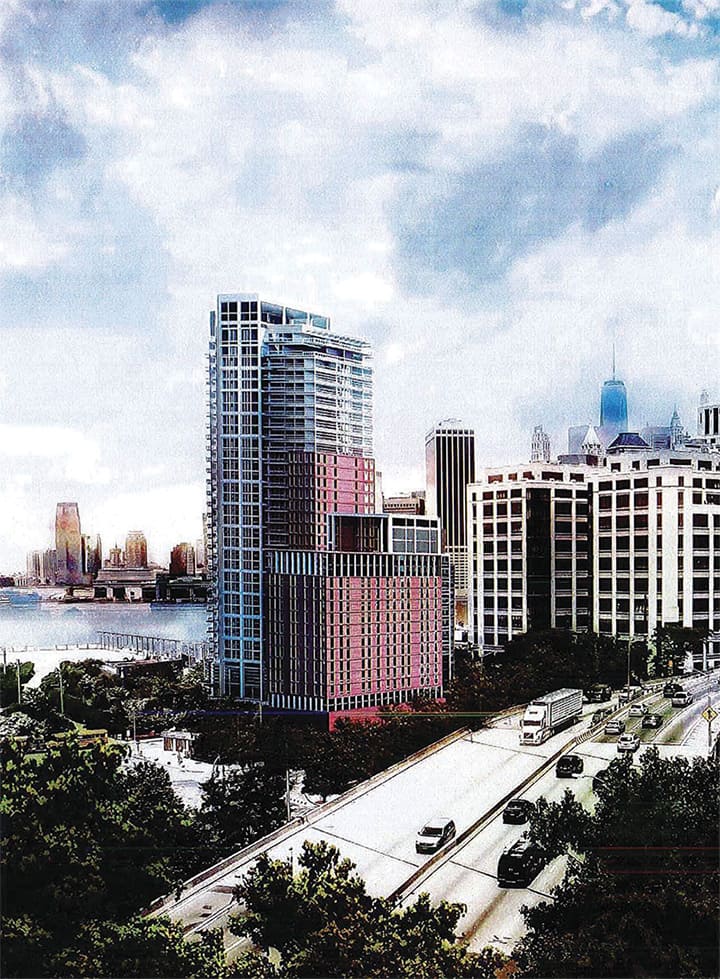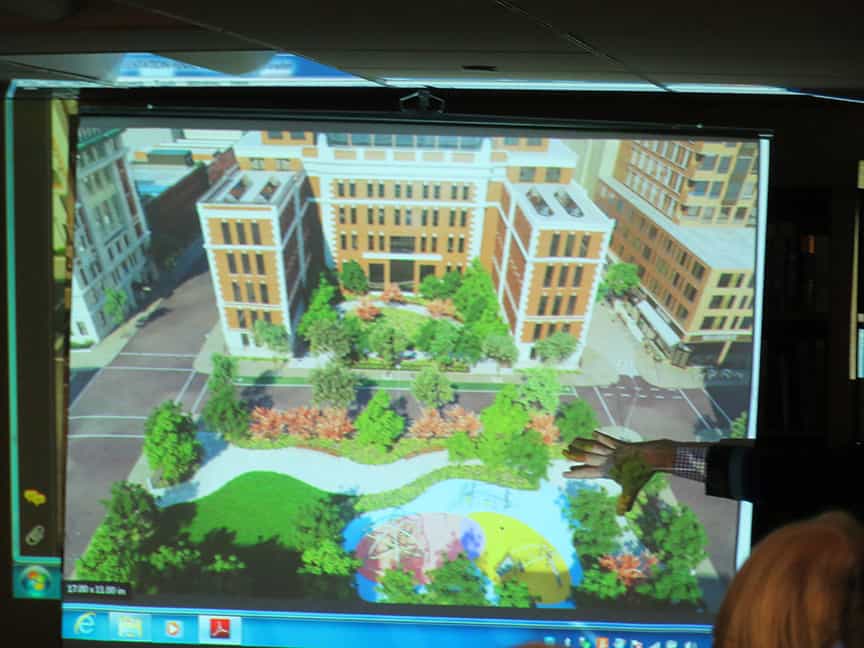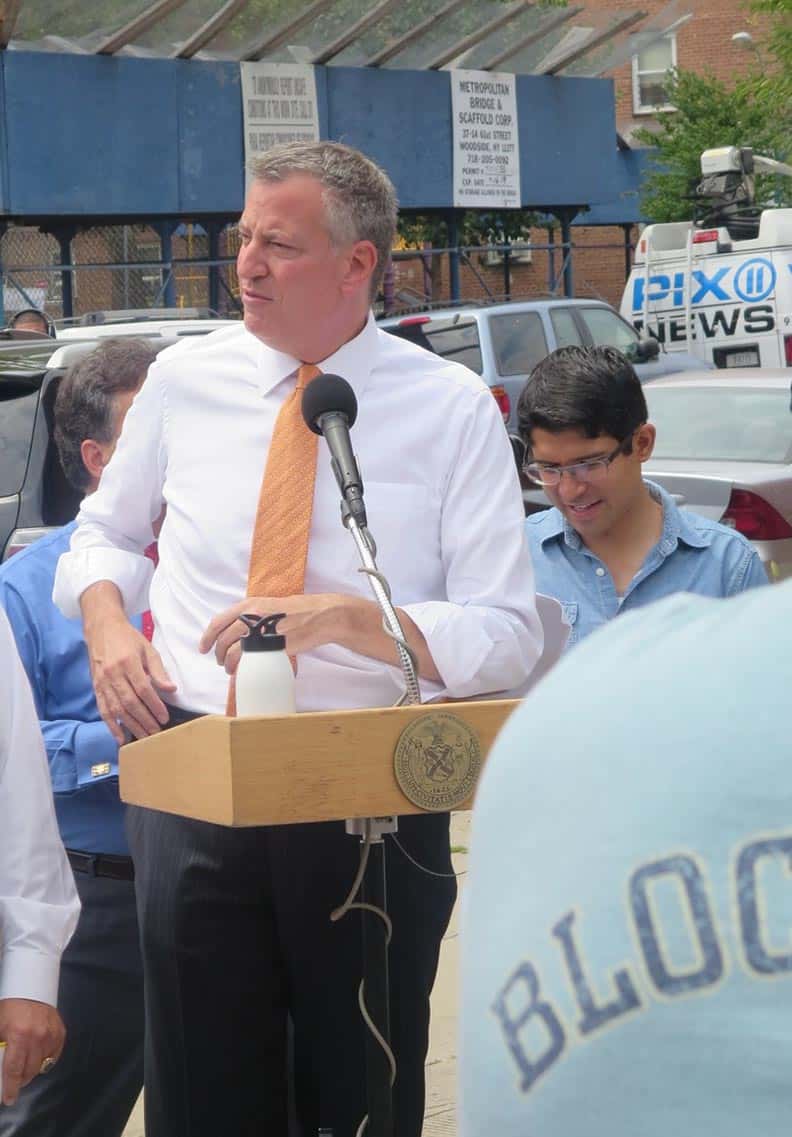This past week afforded me a rare opportunity to see the corporate mind in action. I was invited to take part in a weeklong public relations event held by the world’s biggest chemical company on the occasion of their 150th anniversary.
As a representative of the media, I actually got to ask the actual CEO of their North American operations, which recorded $30 billion in sales last year, a question.
The theme of this event was to posit the city of tomorrow. Everything was based on something they took for granted – that the world’s population will increase from today’s 7 billion to over 9 billion by 2050. The presentations were all about how technology will allow this massive demand on the earth’s resources with no problem. This is seen as a scientific challenge that is also a tremendous business opportunity.

I asked the CEO whether it might not be a better idea to work on limiting this population increase. After all, I was an early attendee at Al Gore’s presentations about the dangers of such an increase, and ways to limit it. Why wouldn’t I ask that question?
He looked at me as if I was some kind of Luddite who never heard of Thomas Malthus. I will admit to being a Luddite at times, but I am fully aware of Malthusianism, and its warnings about an unsustainable population explosion made over 200 years ago. The point I made was one of choice – do we want this explosion, not can technology make it possible. But the corporate focus is on making money – a technological challenge whose solution yields ever increasing monetary gains.
This exchange cemented something in my mind. Our governing bodies are forced to talk out of both sides of their mouths. On the one hand, there is the pressure to accommodate the corporate interests who cheer for increasing population , which means ever-increasing building and top-heavy economic growth. This is the segment of the population that currently funds much of the getting elected process.
These needs must be balanced with the perception that government also works for the rest of the population – which of course in many cases is actually true.
Our recent cover story on the fate of the grounds of the just about defunct Long Island College Hospital illustrates the corporate interest – in this case that of the Fortis Property Group, a real estate development company, versus the entrenched community of Cobble Hill.

Cobble Hill was once a blue collar neighborhood. It’s designation in 1969 as a “Historic District,” slowly turned it into a desirable white shoe community. Landmarks introduced a fifty foot height rule, preventing large housing projects from entering the community. Families bought houses in a community with the promise that its scale would never increase. I large part, because of this limit, brownstones that went for $50,000 in the early 1970’s today sell for multiple millions.
It turns out that the community never thought to extend that height limit to their beloved and historic hospital. They allowed the neighborhood institution to expand as it needed. What was never expected was a cynical future in which that freedom might be used to build a large housing development. That possibility became too tempting an option and so government in collusion with real estate interests, specifically those of the Fortis Property Group, is doing just that, much to the dismay of people who spent millions on their homes with the understanding that such a thing could never happen. We’ve heard that many of the old time homeowners are so upset that they are thinking of selling their homes and leaving.
According to the chemical company mentioned above, they are Luddites. Historical preservation, as well as population control, is bad for business, they say, and who would want that?
The Brooklyn waterfront
The next great real estate frontier in our area are the piers that extend from Atlantic to Hamilton Avenues. Once in important piece of economic activity, providing jobs for the immigrants flooding our shores, they are now seen by corporate interests as having a much greater potential as a long bank of residential towers. The amount of potential profit is measured in billions of dollars.
The challenge for the politicians is to accommodate this massive land grab without spurring a revolt of the rest of the people they represent. It has to be done in stages, framed in such a way as to pull the wool over their constituents eyes without them realizing it.
The first step was Brooklyn Bridge Park. In a city that has underfunded parks since the 1970’s, a new, fancy park is seen by almost everybody as a great plus. It began, in fact, as a community based project. It was soon taken over by a corporation – the Brooklyn Bridge Park Corporation – who took advantage of a new fad called public private partnership, to create at first a fancy park, and now a fancy park serving as a backyard for high priced luxury condominiums and a hotel. But of course, there is still the park – and so the public believes it is eating cake.
However, the joke is on the public. For example, the upscale Brooklyn Heights community who went along with the scam, but are now up in arms about loss of their views as the high rise portion of the park emerges.
As I write this, the next set of towers, planned for Pier Six, has just received approval in what is being framed as a compromise with the community. The advocacy group that was trying to prevent the building of the towers was for some reason represented by the exact same lawyer who represented the State of NY in its mission to shut the hospital. His fight there was against the community, his fight here is to represent the community. That’s how things work, it seems.
The compromise is that the two towers will be slightly smaller, and include today’s new buzzword – affordable housing. The Fortis plan that will be imposed on the community consists of three towers a bit upland from the two Pier Six towers. This is of course a win for the developer interests, as the slightly smaller Pier Six towers will allow better views for the Fortis Towers.

We wrote earlier this year about the battle for Sunset Park’s South Brooklyn Marine Terminal. We saw that battle, recently settled (more on this in a bit), as a piece of a plan to displacePiers 7 – 11 with residential development.
The other night we heard Marshall Sohne, a local real estate developer, speak of those piers, now occupied by the Red Hook Container Terminal. “The City promises us a working waterfront, but instead we get garbage trucks.” He is, of course, correct. Instead of a waterfront teeming with industrial activity, with maximum industrial and commercial use of the 80 acres of what is now prime real estate – the terminal operator is forced to raise income by leasing large parts of it as a commercial parking lot, including a fleet of stinking garbage trucks.
False words
Our leaders continue to insist on the importance of a working waterfront – but in fact they do little to support one. Coordinated government support could no doubt induce more companies to ship to this side of the river. But it seems all they really do is offer platitudes. The ILA, the union representing dockworkers, has been trying in vain to interest our local politicians, including the borough president, to take part in a working group to brainstorm ways to assure the future of a dynamic working waterfront. This would of course bring with it well paying blue collar jobs, but there is little interest. Their first meeting, to take place in Borough Hall, was cancelled at the last minute by the Borough President. Last year they attempted to hold a press conference at the Cruise Terminal to talk about ideas to increase the number of ocean liners using the local cruise terminal, but the effort was shut down by the Economic Development Corporation (EDC) which runs the cruise terminal.
Instead, we hear that Alicia Glen, Deputy Mayor for Housing and Economic Development, who recently held a similar position with Goldman Sachs (another huge corporation), recently toured Piers 7 and 8. It can be assumed it wasn’t a sightseeing visit. Rookie Councilmember Carlos Menchaca, who confronted EDC last year regarding control of Sunset Park’s South Brooklyn Marine Terminal, just concluded a deal that includes the relocation of a ship that had long docked for free on Pier 9. If the city’s goal is eviction of the Container Terminal tenants, Menchaca inadvertently played into their hands by removing the first piece of it.
Pier 7 is occupied by a company called Phoenix Beverage. Phoenix distributes Heineken Beer, and receives their beer imports directly off the container ships unloading in the pier. Another company imports Red Bull. Phoenix also controls the stevedore operations. All these leases are up in 2018 and the clock is ticking.
Having garbage trucks despoil the landscape is the first step in convincing the neighborhood that losing what is called the maritime industry from Columbia Street will be a good thing. Undoubtedly, plans and renderings are already being prepared for beautiful scenic parks along the waterfront. Bicycle paths and nature trails will also be inserted. However, these are the sweeteners that will be placed between fifty story luxury buildings to make it palatable. In addition there will be the requisite affordable housing element that will help the mayor achieve his self-proclaimed goal of 200,000 units.
We will be sorry to see our communities change, but, after being exposed to the way corporate executives think, and knowing that these executives are, after all, human beings, just like us, we do get it.
In the old days it was called, ‘What’s good for General Motors….”
[mailerlite_form form_id=1]








